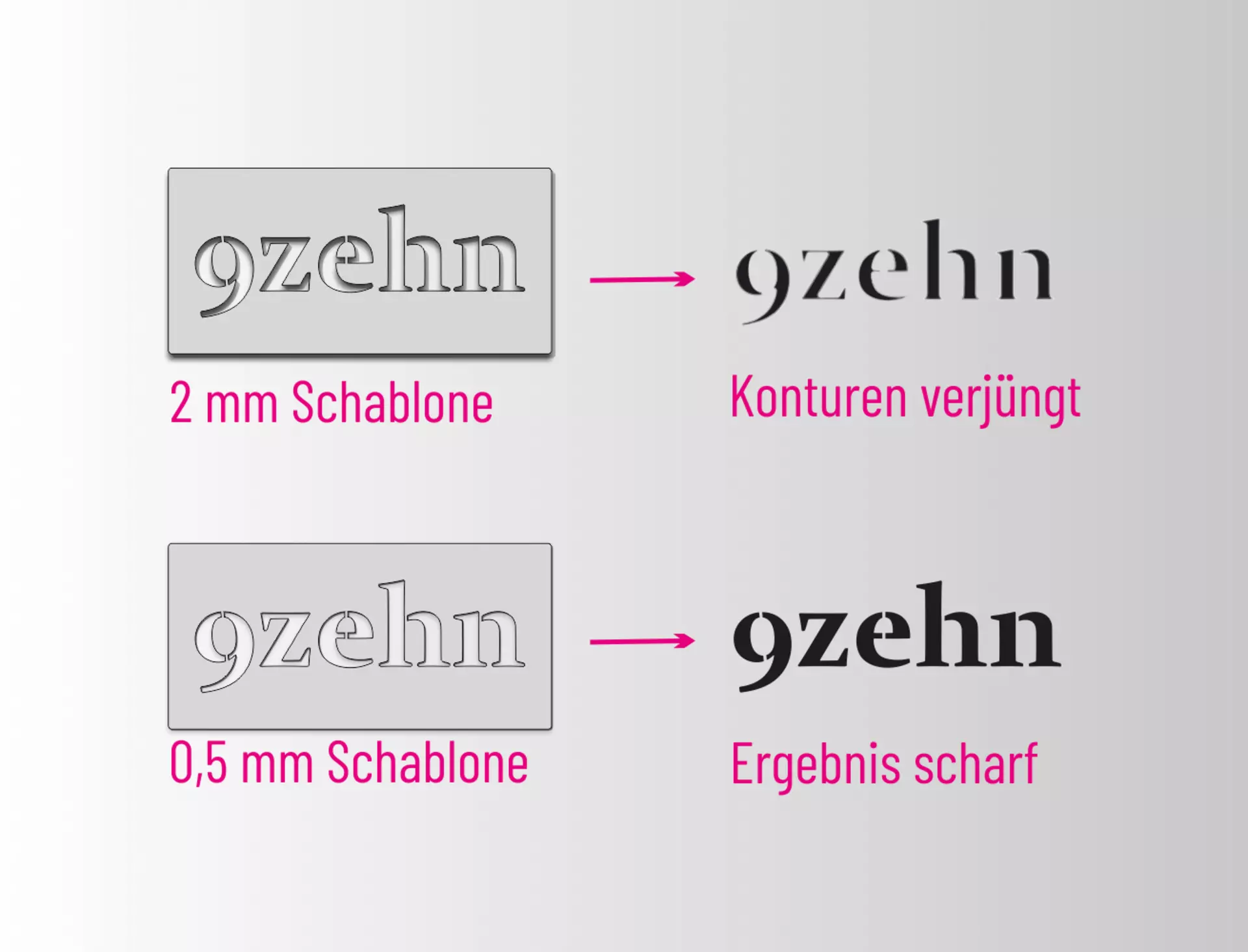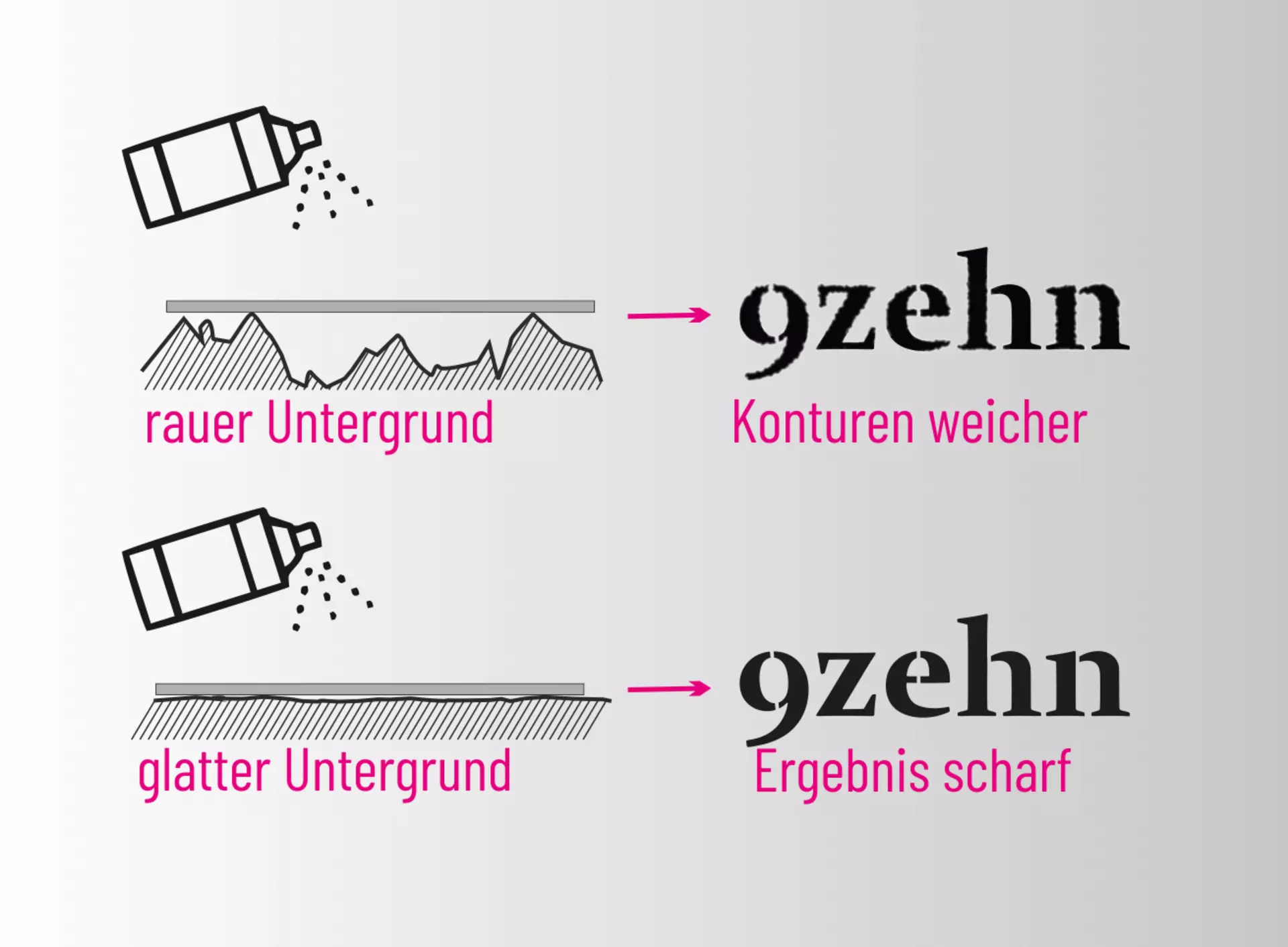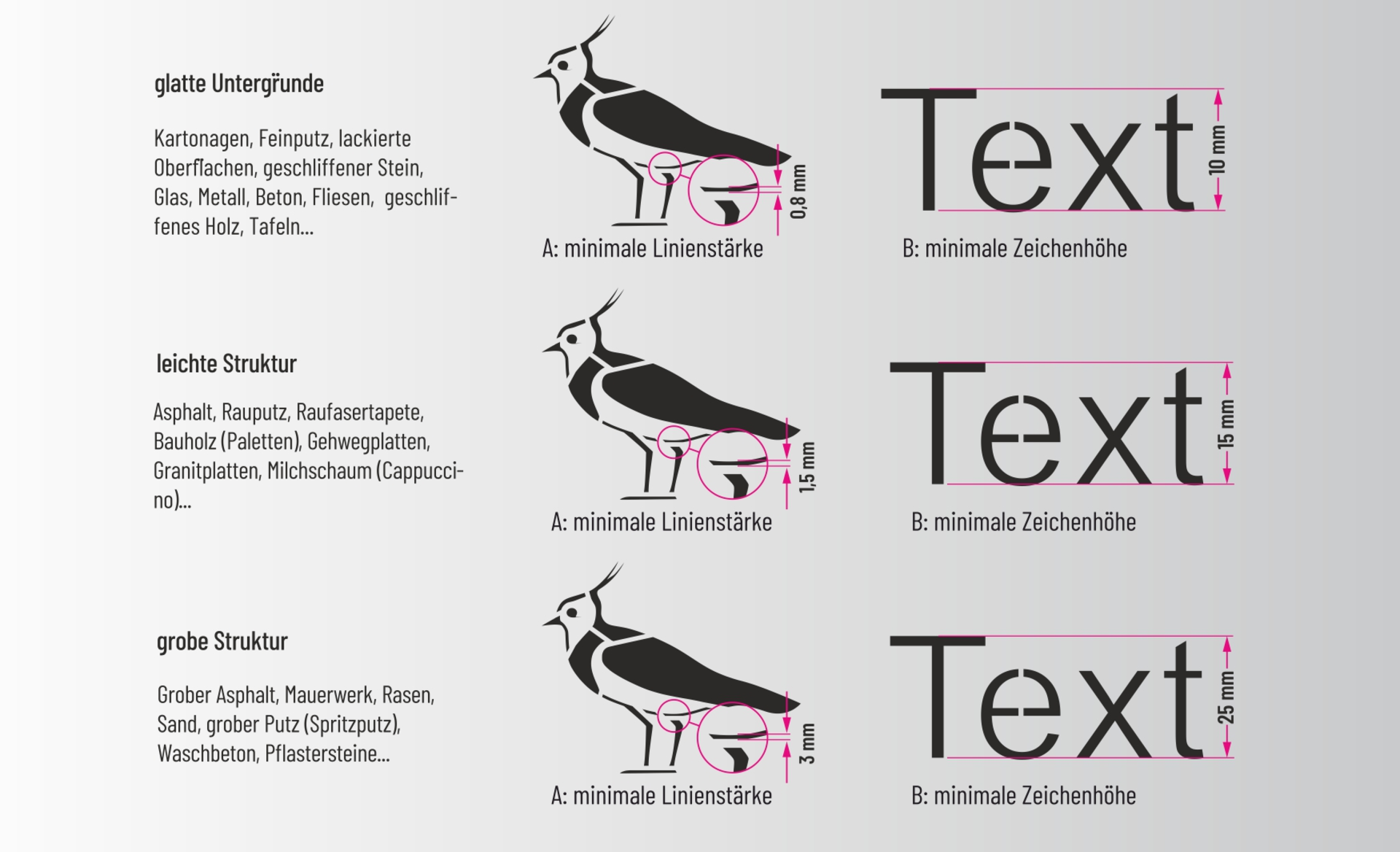Material Thickness
Thicker is better, right? Au contraire, mon frère!
With thinner stencils, you get sharper design edges because the paint cannot penetrate into the corners as well with thicker material. So, we're not trying to save costs but to enable the best result. Our choice for metal stencils, therefore, is stainless steel sheet, not aluminum. Here, we achieve the same weight & stability at about a third of the material thickness. An exception is made for burning stencils, which need to be a bit thicker so they don't deform under high heat.
Technical Production Advantage
Our thinner material thicknesses, whether plastic (0.35mm) or metal (0.5-1mm), allow for a much higher resolution during laser cutting. Thus, we can cut much more delicate texts & motifs. Of course, the stencils are still stable.




